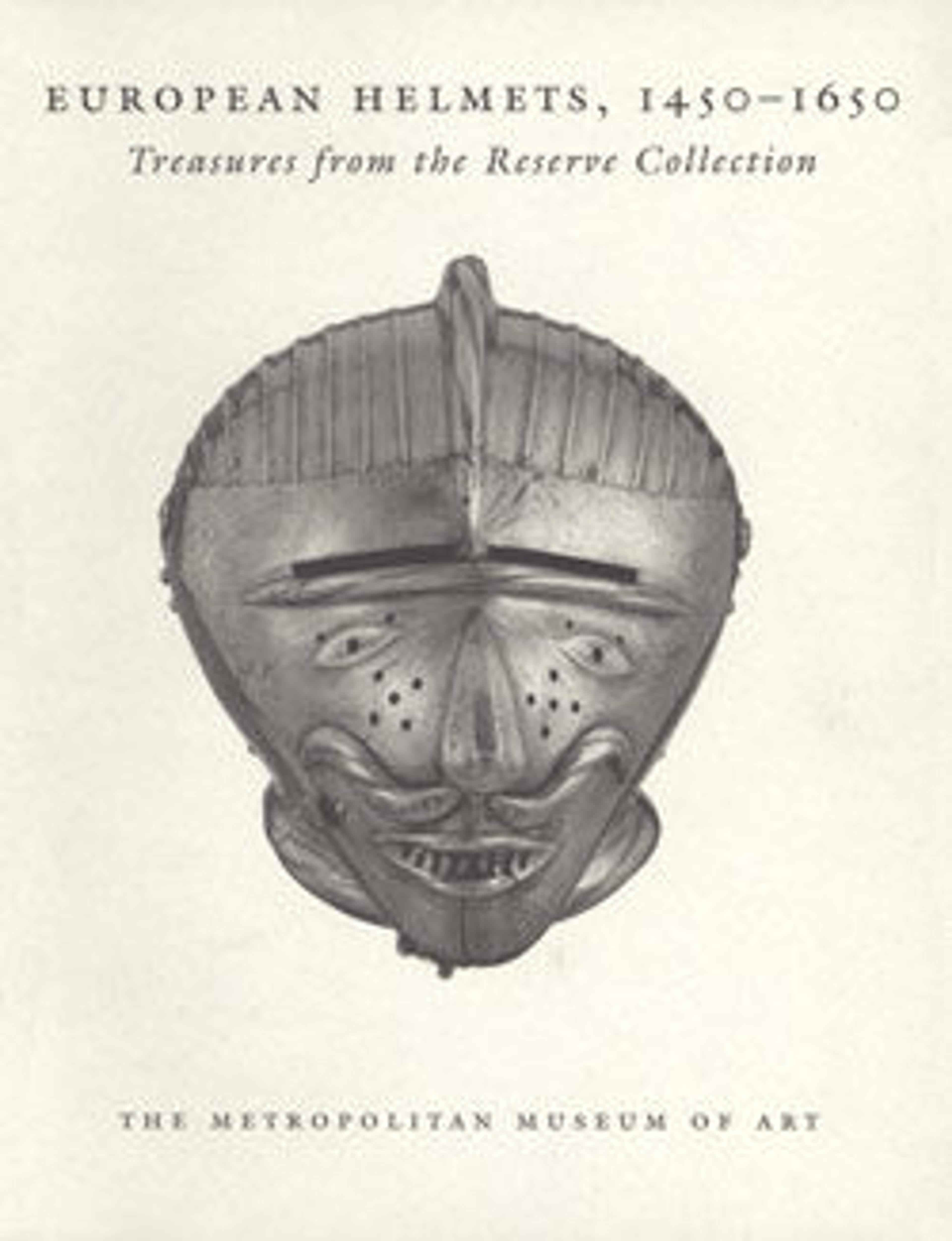Tournament Helm
Helms bolted to the breast- and backplate and having large visors with multiple apertures for maximum sight and ventilation were typically used both in the tourney and in foot combat. The former was a mock combat fought by groups of mounted contestants armed with lances and rebated swords or clubs; in the latter, two armored contestants fought on foot within a wooden enclosure, the favored weapons usually being polaxes or swords, their strokes carefully monitored by referees. This helm bears faint traces of a mark, an M surmounted by a crescent, which is thought to be that of Guillem Margot (active in Brussels, recorded 1505–20). The same mark appears on three other elements of armor in the Metropolitan Museum: an armet (acc. no. 29.158.52); and elbow defense, or couter (acc. no. 29.158.1h, where it is struck twice); and the front half of a tournament helm (acc. no. 14.25.572).
Artwork Details
- Title:Tournament Helm
- Date:ca. 1510–20
- Culture:Anglo-Flemish
- Medium:Steel, copper alloy
- Dimensions:H. 17 1/4 in. (43.8 cm); W. 9 1/8 in. (23.2 cm); D. 14 1/8 in. (35.9 cm); Wt. 10 lb. 5 oz. (4675 g)
- Classification:Helmets
- Credit Line:Bashford Dean Memorial Collection, Funds from various donors, 1929
- Object Number:29.158.38
- Curatorial Department: Arms and Armor
More Artwork
Research Resources
The Met provides unparalleled resources for research and welcomes an international community of students and scholars. The Met's Open Access API is where creators and researchers can connect to the The Met collection. Open Access data and public domain images are available for unrestricted commercial and noncommercial use without permission or fee.
To request images under copyright and other restrictions, please use this Image Request form.
Feedback
We continue to research and examine historical and cultural context for objects in The Met collection. If you have comments or questions about this object record, please contact us using the form below. The Museum looks forward to receiving your comments.
